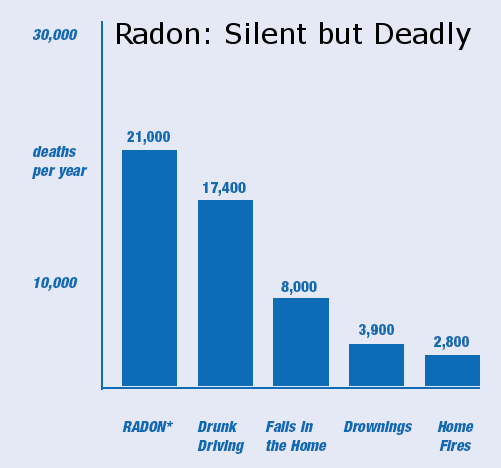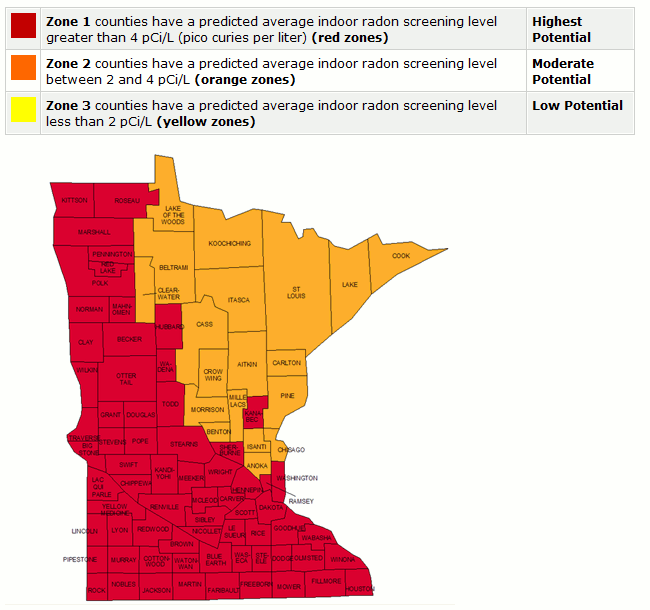
Image courtesy EPA
Most people have heard the word radon before, but many probably do not understand what it is. As found in the EPA’s A Citizen’s Guide to Radon (pdf version here):
Radon is a cancer-causing, radioactive gas. You can’t see radon. And you can’t smell it or taste it. But it may be a problem in your home.
Radon is estimated to cause many thousands of deaths each year. That’s because when you breathe air containing radon, you can get lung cancer. In fact, the Surgeon General has warned that radon is the second leading cause of lung cancer in the United States today. Only smoking causes more lung cancer deaths. If you smoke and your home has high radon levels, your risk of lung cancer is especially high.
The Minnesota Department of Health also has some great information on Radon.
Radon on Minnesota:

Image courtesy EPA
A few years ago I was working with a buyer who during the inspection process also requested a radon test because he was planning to put an office in the basement and consequently would be spending a lot of time there. When we received the results back from the test we found out that the levels were significantly above the EPA action level of 4.0.
At first I thought: damn, this could be really expensive to mitigate. After speaking to my colleagues and to a couple of mitigation contractors, we found out that the process is relatively easy and not very expensive at all.
The process typically involves digging a hole in the foundation about the size of a 5 gallon pail and then installing solid PVC piping from the hole up through the roof line, with something similar in size to a bath fan installed in the piping in the attic. This fan exhausts the radon gas up and out the roof where it dissipates quickly. In houses that have a drain tile system installed the installation can typically get the radon levels below 1.0 because of the efficiency of the drain tile at getting a broad suction around the foundation.
Once the system is installed the contractor will run a second test to confirm that the radon levels have been brought down within safe limits. If the level is still elevated, a larger fan typically resolves the problem.
Depending on the contractor chosen and the difficulty of the work to be done, most projects are in the $1000 – $1800 range and can be completed in a day! Since that time I’ve had most of my buyers do tests during inspection and I’ve found that about 1 in every 3 of my clients find high levels of Radon. In fact, the 2005 built house I bought in Champlin last fall had a level of 4.0 and a 2005 built house I just sold in Minnetonka had a level of 19! Homes built today do have more systems in place to prevent Radon but a test is important to verify that the systems are working.



